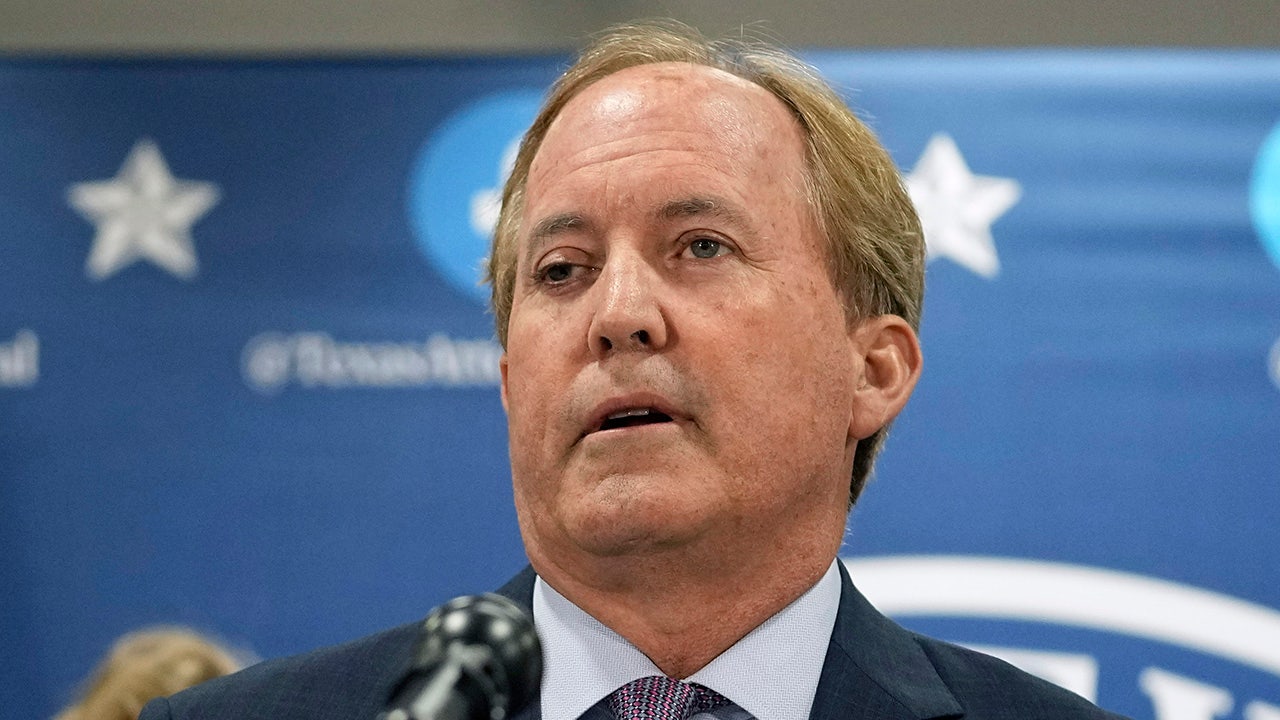Ohio
N.E. Ohio families say more state childcare assistance is needed in new state budget

CLEVELAND — Calah Dean is a Cleveland mother demanding that the State of Ohio passes a new state budget that will include significant improvements in state childcare support for low-income families.
Ohio lawmakers are currently working on a new two-year state budget, which must be approved by June 30 at midnight, with state childcare support being one of the biggest issues up for debate.
Dean told News 5 that because she and her husband were just above the $32,703 qualifying family income level for state daycare assistance, it was better for her to quit her job and stay home to watch their two young children.
“It’s very difficult. You can’t make too much, otherwise, you’re beyond that line to even afford to have my child in daycare, but you have to make ends meet at the same time,” Dean said. “The make-or-break factor was paying for childcare; it just wasn’t doable for us and so I had to stay home and live off my savings for a while.”

Dave Deger
Both Dean and Children First of Cleveland Daycare Executive Director Joan Hamm believe the State of Ohio needs to significantly increase the state childcare assistance qualifying wage so that more parents can get the help they need and get back into the workforce.
“This is a broken system. None of it makes any sense,” Hamm said. “If we’re not ready to invest in young children, then we’ve really missed the mark. They’re the ones who suffer. We need our legislators to get on board. We need our legislators to understand.”

Dave Deger
Will Petrik, Project Director with Policy Matters Ohio, told News state data indicates Ohio has one of the worst qualifying wage levels for childcare assistance in the nation, pointing to his agencieslatest childcare report.
“Currently, if you’re making $16 an hour and you’re a single mom with two kids, you make too much to be eligible for publicly funded childcare,” Petrik said. “Currently, initial eligibility is set at 142% of the national poverty level. The DeWine budget proposal expands that up to 160%, but the senate budget rolls that back to 145%.”
Petrik said Ohio Governor Mike DeWine’s state budget proposal, approved by the House and now being revised by the Senate, is a start, opening up childcare assistance to approximately 15,000 additional children statewide, but he said Ohio would still have a long way to go.
“Alaska has eligibility of over 300% of the federal poverty level, South Carolina is at 297%, somebody at the median income making a little over $60,000 for a family of three could actually get a little bit of support,” Petrik said. “We ought to be at 300% of the federal poverty level. That means that a family of three could make a little over $69,000 annually and still qualify for some daycare support.”
Nickie Antonio, Ohio Senate Democratic Leader for Ohio’s 23 Senate District, told News 5 it’s essential to increase state childcare support to help Ohio continue to recover from post-pandemic worker shortage issues.
“It’s crucial that we expanded services, support for low-income families,” Antonio said. “We’re still in the recovery mode when it comes to building back, and one of the ways is trying to provide more childcare for folks to go back to work. If we’re serious about want to solve our workforce needs, then we need to invest.”
News 5 is committed to following through on the Ohio state budget debate as the state works toward an approved two-year budget by June 30.
We Follow Through
Want us to continue to follow through on a story? Let us know.

Ohio
Why are flags in Ohio flying at half-staff? American flag lowered most of May. Here’s why

Why do U.S. and state flags fly at half-staff?
Learn more about why the U.S. and state flags fly at half-staff.
On Tuesday, May 27, Ohio Gov. Mike DeWine ordered flags be flown at half-staff to honor slain Morrow County Sheriff’s Office deputy Daniel Sherrer.
Flags will remain lowered until sunset on the day of Sherrer’s funeral, which had not been announced as of May 27. The deputy, 31, died in a Memorial Day shooting while responding to what officials are calling a “domestic violence situation.”
If it seems like flags in Ohio have been flying at half-staff a lot lately, well — they have been. Through 27 days of May, flags have been lowered for at least 20 of them. And that number will grow with DeWine’s latest order.
Here are all the times DeWine has ordered flags to fly at half-staff in May.
Ohio Gov. Mike DeWine orders flags to fly at half-staff six times in May
DeWine has ordered flags lowered six times so far in May 2025:
- Honoring Daniel Sherrer: DeWine ordered flags lowered from May 27 through the dates of his funeral.
- Recognizing Memorial Day: DeWine ordered flags to fly at half-staff from 12:01 a.m. through Noon on May 26.
- Honoring Symeon Williams: DeWine ordered flags lowered from May 17 through the May 29 funeral of Symeon Willams, a Cleveland fire cadet who died during training.
- Recognizing Peace Officer Memorial Day and Police Week: DeWine ordered flags to fly at half-staff on May 15.
- Honoring Larry Henderson: DeWine ordered flags lowered from May 4 to the May 9 funeral of Larry Henderson, the Hamilton County sheriff’s deputy killed while directing traffic on May 2.
- Recognizing the National Fallen Firefighters Memorial Service: DeWine ordered flags to fly at half-staff on May 4 for the National Fallen Firefighters Memorial Service.
Why are flags flown at half-staff?
The American flag flies at half-staff when the country or a state is in mourning, according to USA.gov. Flags can be ordered to fly at half-staff by the president, a state governor or the mayor of the District of Columbia. In most cases, flying the flag at half-staff marks a significant death, such as a government official or military member; a national tragedy or a national day of remembrance, such as Patriot Day or Memorial Day.
What is the difference between half-staff and half-mast?
Half-staff refers to flags on land. Flags are flown at half-mast on nautical vessels, such as a naval ship. But the purpose is the same for both.
Ohio
Education advocates want voters to decide on DEI ban in Ohio colleges, universities

CINCINNATI — Education advocates were out in the Cincinnati streets Monday trying to push back against Senate Bill 1 (SB 1), which would ban diversity, equity and inclusion (DEI) in state colleges and universities.
“It is a way to erode public higher education in Ohio. So the bill is designed to eliminate programs and services that are based on identity groups,” said Kate Durso, the southwest regional captain advocating against SB 1.
SB 1, or the “Ohio Higher Education Act,” was signed into law by Gov. Mike DeWine on March 28. The law goes into effect on June 27.
Facebook: Ohio Senate Republicans
The law bans DEI from trainings, orientations, offices, positions or new institutional scholarships at state colleges or universities. Other policies in the Ohio Higher Education Act include a required American civics literacy course, prohibiting full-time university faculty from striking and automatically eliminating any university degree program that awards fewer than five degrees per year on a three-year rolling average.
SB 1’s text states that the law is meant to support “intellectual diversity” at state colleges and universities.
In February, WCPO 9 reported on SB 1 after the state’s Senate passed the legislation. One Republican senator explained why supporters are cracking down on DEI on college campuses.
“Rather than fostering equality, DEI enforces racial divisions, prioritizes group identity over individual merit and creates (the) very discrimination it claims to be fighting,” said state Sen. Andrew Brenner (R-District 19).
Watch to learn more about how advocates are challenging SB 1 and what it means for Ohio’s higher education landscape:
Volunteers look for support to fight Ohio’s ban on DEI at state colleges
An excerpt from SB 1 describes how teachers are expected to enable free thought and discussion under this legislation:
“Affirm and declare that faculty and staff shall allow and encourage students to reach their own conclusions about all controversial beliefs or policies and shall not seek to indoctrinate any social, political, or religious point of view;”
Senate Bill 1
I met with Kate Durso and her team of volunteers, who disagree with the lawmakers behind SB 1.

WCPO 9 News
“I would say that this bill, in fact, does not promote more inclusive conversation. It actually creates boundaries and barriers against civil discourse,” Durso said.
A member of Durso’s volunteer team told me that SB 1 is pushing her away from her home state.
“Yeah, I graduated from UC, University of Cincinnati, in 2023, and I’m pursuing law school now. And this bill, SB 1, was one of the reasons that I’m not staying in my hometown of Cincinnati for law school; it just scares me too much,” Erin Tedtman said.

WCPO 9 News
Now, she is one of the local advocates in an initiative to move the law to a ballot issue this fall.
Advocates sent a referendum petition to Attorney General Dave Yost’s office in April. That process required 1,000 signatures. Once the AG’s office approved the first part of the referendum, the volunteers’ efforts expanded. The volunteers have to collect 250,000 signatures across at least 44 of Ohio’s 88 counties, as Durso explained. Their deadline is June 25.
“We need to hit a certain percentage within each of those counties based on the 2022 gubernatorial election,” Durso said.
The volunteer captain said that her team and others across Ohio are trying for as many signatures as possible, because some may be marked invalid, which could occur even with a slight mistake.
“If someone accidentally writes their first and last name in the same box instead of following the directions on the form or includes the wrong address,” Durso said.
As a lifelong educator, Durso told me this is her way of advocating for students and staff she works with.
Ohio
Unlicensed 15-year-old driver hits police cruiser in Ohio

An unlicensed teen hit a police cruiser while driving their parent’s truck in Ohio.
[DOWNLOAD: Free WHIO-TV News app for alerts as news breaks]
The Whitehall Police Department said an officer was helping someone locked out of their car on April 28 when the cruiser got hit by a 15-year-old driving the truck, according to a social media post.
TRENDING STORIES:
Advertisement
Advertisement
The department said the teen did not have a license, and that’s not all.
“Even more troubling: their parent allowed them to drive anyway,” the department said on Facebook. “Needless to say, charges were filed.”
They said this could have been much worse.
“Allowing an unlicensed, underage driver on the road puts everyone at risk—other drivers, pedestrians, and the teen themselves,” the department stated.
Whitehall Police said that parents who allow this behavior will be held accountable.
[SIGN UP: WHIO-TV Daily Headlines Newsletter]
-

 World1 week ago
World1 week agoSevere storms kill at least 21 across US Midwest and South
-

 News1 week ago
News1 week agoWatch: Chaos as Mexican Navy ship collides with Brooklyn Bridge, sailors seen dangling – Times of India
-

 News1 week ago
News1 week agoMaps: 3.8-Magnitude Earthquake Strikes Southern California
-

 Politics1 week ago
Politics1 week agoTexas AG Ken Paxton sued over new rule to rein in 'rogue' DAs by allowing him access to their case records
-

 Politics1 week ago
Politics1 week agoAfghan Christian pastor pleads with Trump, warns of Taliban revenge after admin revokes refugee protections
-

 World1 week ago
World1 week agoPortuguese PM’s party set to win general election, fall short of majority
-

 Politics1 week ago
Politics1 week agoTrump, alongside first lady, to sign bill criminalizing revenge porn and AI deepfakes
-

 News1 week ago
News1 week agoVideo: One Person Dead in Explosion Outside Palm Springs Fertility Clinic


















